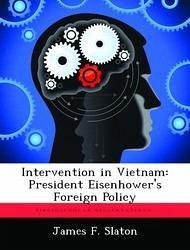
Military Intervention in Vietnam: How Policymakers Shaped Counterinsurgency Efforts
Versandkostenfrei!
Versandfertig in über 4 Wochen
52,99 €
inkl. MwSt.

PAYBACK Punkte
26 °P sammeln!
This research explores why the United States did not conduct an effective counterinsurgency campaign in South Vietnam. Authors such as Andrew Krepinevich have made the common argument that military leadership approached the insurgency problem in South Vietnam based on the "Army Concept" of war, a perception that wars should be fought conventionally and with massive firepower. They assert that this doctrine shaped the strategy in Vietnam. This paper makes an alternative argument that the "Army Concept" was facilitated in Vietnam by poor civilian leadership at the highest levels. It chronicles s...
This research explores why the United States did not conduct an effective counterinsurgency campaign in South Vietnam. Authors such as Andrew Krepinevich have made the common argument that military leadership approached the insurgency problem in South Vietnam based on the "Army Concept" of war, a perception that wars should be fought conventionally and with massive firepower. They assert that this doctrine shaped the strategy in Vietnam. This paper makes an alternative argument that the "Army Concept" was facilitated in Vietnam by poor civilian leadership at the highest levels. It chronicles senior leader thought processes between 1963 and 1965 to demonstrate how policymakers shaped counterinsurgency efforts. The political goal of a negotiated settlement with North Vietnam, and the constraint of arms-length involvement, underpinned the mission of US combat troops and led to a disconnection between that mission and the larger counterinsurgency effort in South Vietnam. Policymakers demonstrated this disconnection by their delay in placing all US operations under one command, and in their failure to press the South Vietnamese Government for reform. The Vietnam War serves as an example that our civilian leaders need to understand the multi-dimensional aspects of fighting an insurgency, and that military forces cannot solve all the problems. In future conflicts of this nature, policymakers need to find ways to reconcile the likely conflict between recognizing the sovereign rights of the government they are supporting, and at the same time trying to ensure the government is addressing the concerns of the majority of its people.












